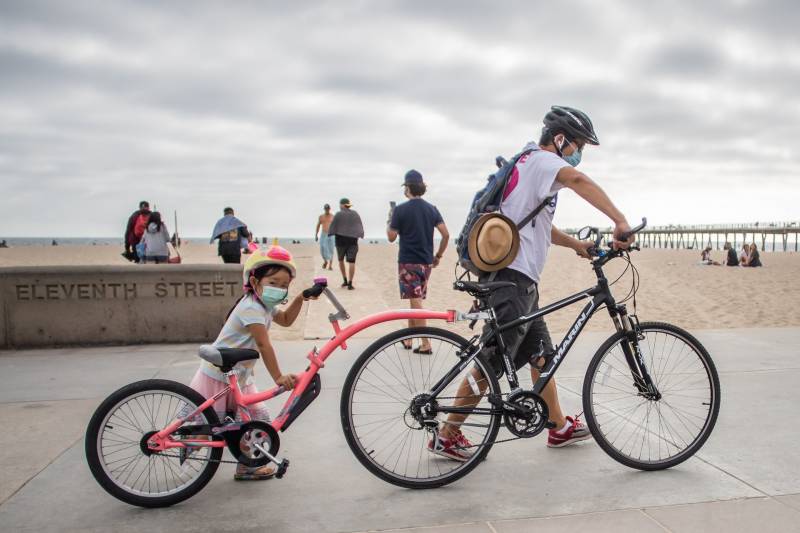Sullivan represents hundreds of other home-based providers through the Family Child Care Association of San Francisco. She said the group is made up largely of women of color, and they’re facing a challenging loss of income.
“If the parents chose not to return, we were no longer getting paid,” she said, reflecting on the time since June 1, when day care centers serving the general public were allowed to reopen. Those serving the children of essential workers have been allowed to stay open throughout the pandemic.
Sullivan said there were already shortages in available child care spots for infants and toddlers in San Francisco, and if providers close permanently, people with very young children “are going to have a hard time finding care.” She also said providers who offer “off-hours care,” anything outside of the hours of 7 a.m. to 6 p.m., are less likely to stay open, since many are primarily essential workers in other sectors, like grocery stores, and caring for children would be too risky in terms of coronavirus transmission.
Gina Fromer, CEO of the nonprofit Children’s Council of San Francisco, an advocacy group for child care, said providers “are hurting right now.”
While San Francisco and the state have extended some financial relief, Fromer said strict COVID guidelines mean “the majority of the sites in San Francisco are operating at half capacity,” as they must adhere to social distancing, smaller group sizes, and fewer children returning out of family choice.
“If you’re a family day care home and you were supporting 24 kids pre-COVID and now you can have six, what does that do for your business?” she asked.
In fact, just over 40% of San Francisco’s roughly 1,100 child care providers are currently closed, according to the San Francisco Office of Early Care & Education. This includes larger centers, often run by companies out of a specific site, and family day cares, which are smaller and typically based in a provider’s home.
Fromer said some of these providers won’t open back up again, which is not just a problem for children, families, and the child care industry.
“There is no road to recovery in San Francisco without child care,” she said, noting that businesses will suffer if their employees can’t find proper care for their kids. She estimates that 40% of child care providers shut down after the 2007-8 economic recession.
“We need local, state and federal investment in child care infrastructure in order for the economy to bounce back,” said Fromer.
Some families are choosing not to send their children back to day care due to the expense and fear of their children getting or passing the coronavirus.
Dr. Naomi Bardach, associate professor of pediatrics and health policy at UCSF, said there are risks of children getting COVID-19 and transmitting the virus to adults, but those dangers are low.
“Most younger kids get very mild illness if they get ill at all, and they are much less likely to get it compared to adults,” she said.
Throughout all of California, the number of child care staff, children and their parents who’ve tested positive for the virus is roughly 1,518 as of July 29. Of that number, 313 were children, 562 were staff, 489 were parents, and 154 were in none of those categories, such as people who live in the home of a family day care worker but are not on staff.
Compared to the total number of preschool children in California, which she estimated “in the hundreds of thousands at least,” the number of children at day care who’ve tested positive is relatively low, she said.
Bardach said of the positive coronavirus cases associated with child care, “We’re not totally sure if it came from the community or the preschools. And then the other thing is we have to just put it in the context of [how] we take some risks normally in our lives when we drive in a car or cross the street.”
She added that when parents make their decisions, it’s important to consider how prevalent the virus is in their community, and what the safety practices are at their specific child care setting.
Back at Baby Steps Nature School, Sullivan understands that parents are fearful. Even if they do send their kids to day care, she sees that fear pop up in other ways — through the kids. She said her young charges are afraid to separate from their parents because they worry their mom or dad may get the virus.

